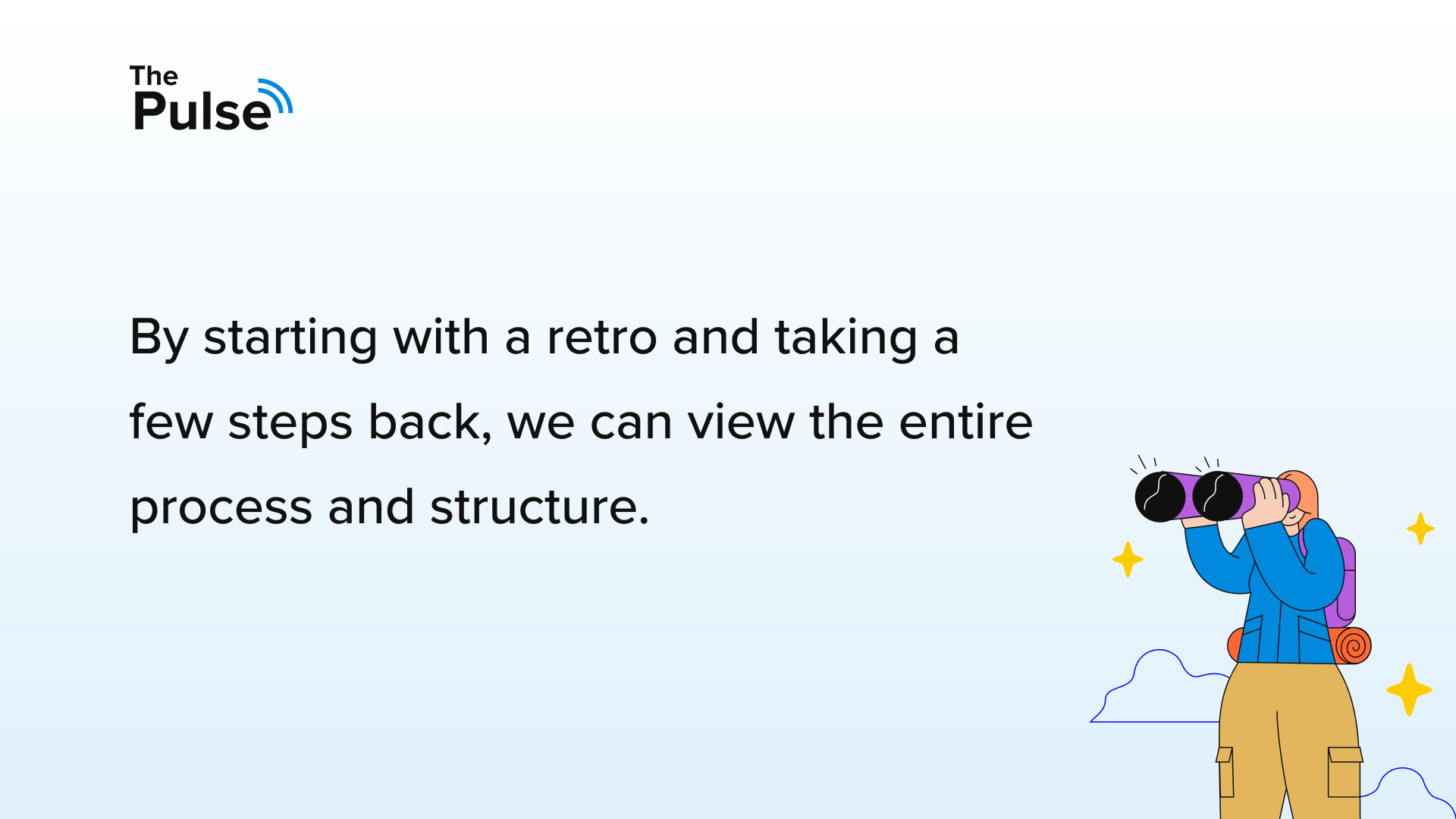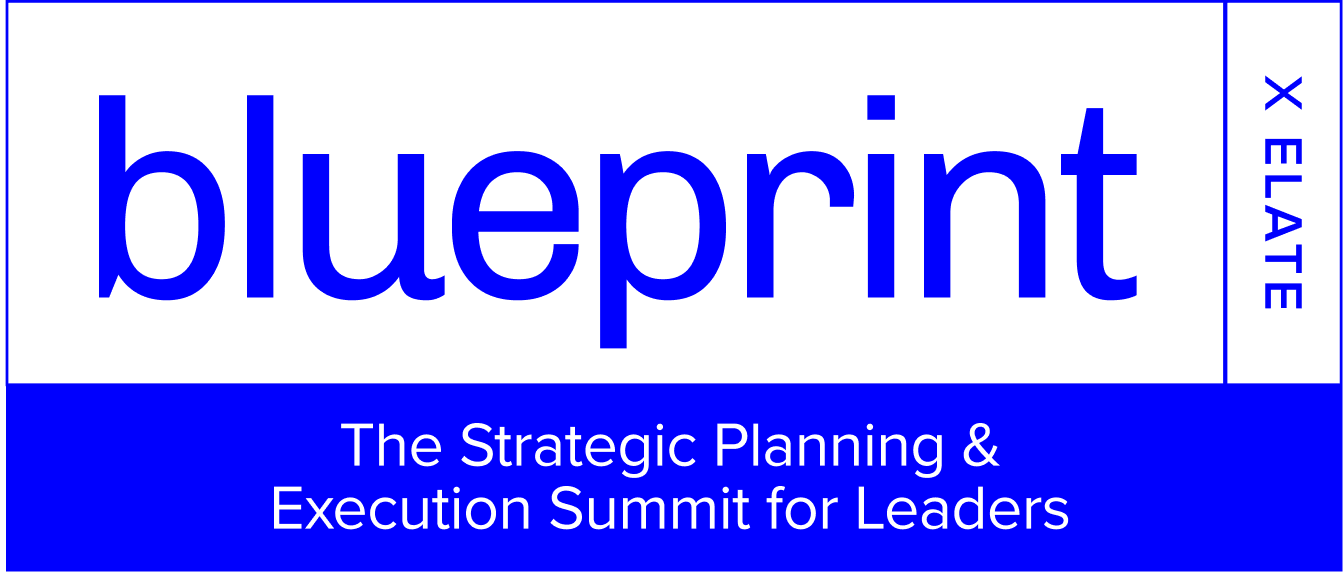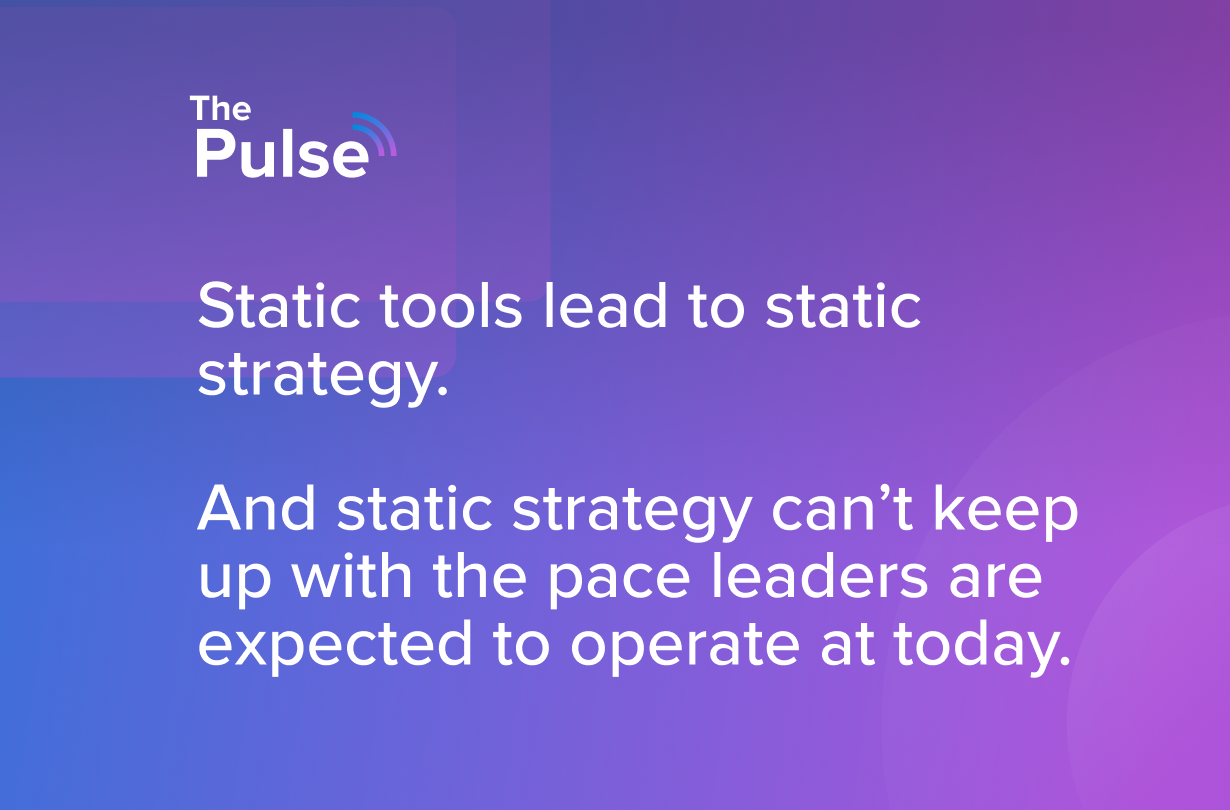
Welcome to the 27th edition of The Pulse, your bi-weekly newsletter of Insights for Strategy Leaders. And welcome to all of the new subscribers since the last edition!
Get The Pulse delivered to your inbox here.
In this edition:
- 🎯Planning for Success in the Home Stretch
- Upcoming Event Reminder: Blueprint
- Strategic planning resources
Part One: Planning for Success in the Home Stretch
For many organizations, July can mark the beginning of the dog days of summer. With team members starting their summer holidays, it can feel like everything slows down a bit.
While I enjoy taking a step back and enjoying some of the pleasures that summer has to offer like travel, trips to the lake, and simple lazy afternoons, over the years, I’ve always found this time of the year can bring a certain level of anxiety.
Personally, I feel the weight of knowing that in only a few short months, I’ll be overseeing annual planning and the responsibilities that come with it. From coordinating the dates and location to setting the agenda, there’s a lot involved in bringing those sessions to life, and some years I certainly feel more equipped than others.
Additionally, the company’s performance through the first half of the year can impact my feelings about the annual planning process and my peace of mind heading into summer vacation.
As Strategy and Operations Leaders, we have unique visibility into the organization's overall health and often carry as much weight regarding company performance as anyone else, except the CEO.
However, over the years, I’ve realized that this isn’t a unique thing to me. For better or worse, I’ve recently heard similar sentiments from many Leaders we work with here at Elate.
In this two-part edition of The Pulse, I want to start by addressing a feeling I’ve experienced personally and that other Strategy and Operations Leaders share. More importantly, I want to discuss what we can do about it.
In part one, we’ll explore the reactions I’ve observed from Strategy and Operations Leaders and how to correct course or continue building on what’s working.
In part two, we’ll dive into two more examples of ensuring we, as leaders, control the controllables and set our organizations up for success.
As I’ve shared, this season has been a mixed bag of emotions for me over the years. But in several recent conversations, I’ve noticed leaders’ reactions can go one of two ways…
Some Leaders react positively. Whether the first half of the year went as expected or not, there’s a sense of growth and learning. They’ve been proactively evaluating what’s working and what’s not, implementing measures to change the tide or continue building on successful momentum.
Regardless of whether they’ve hit their targets, they know that the right habits, processes, and structures are in place to accelerate or persevere during difficult seasons.
On the flip side, I’ve met with folks who have thrown in the towel. Whether due to self-doubt or a belief that they are constantly fighting a losing battle against other Leadership members as they’ve tried to introduce a framework to drive accountability and visibility across their organizations, many Leaders are disheartened because there is a dreaded sense of inevitability for the remainder of the year.
One example is a Chief of Staff I met with a few weeks ago, who seemed defeated.
They had spent the past 12 months trying to communicate to other Leaders the need for clear priorities to be communicated to employees. This was especially important after a 10% RIF, as folks felt disconnected from the organization’s vision.
However, the Chief of Staff was met with resistance. The common response from other members of Leadership was, “We don’t need more process. Everything is about getting to our revenue target this year. Anything that takes away from that isn’t important.”
Well, six months into the year, they had just barely missed their Q2 target (97% to goal), and worse, they had dozens of critical team members quitting. And these weren’t other Leadership members, these were some of their top individual contributors. Leading sales rep, customer success manager, top engineer, you get the picture.
After months of trying to communicate with the rest of Leadership that employees felt misaligned and disconnected from the organization’s goals, they were not only failing to see results but also losing their top talent.
This scenario is what causes so many Strategy and Operations Leaders to simply say, “Well, things aren’t going well, but I don’t know how to change them.”
They feel so disheartened by the constant pushback of other Leadership team members to commit to a process for building, executing, and reviewing a strategy regularly. So instead of trying to adapt to change, they say, “I need them to see this process won’t work before they listen.”
As cynical as that may sound, I know this is a reality for many of the Strategy and Operations Leaders out there trying to invoke change within their organization. So what can we do about it? When we feel as though there are no other options but to yield to the status quo, even when we know it isn’t working. How can we intervene?
Well, while others might be in the dog days of summer, this is when we as Strategy and Operations Leaders can build a plan for change. To help do just that, there are three things I recommend evaluating this month that can alter the course of your organization heading into the second half of the year and beyond.
Let’s start with the first one, which is often overlooked but crucial for driving sustained change.
1. Understand What Was, to Control What Can Be.
If you are going to bring about change within your organization, you have to tell a compelling story as to why change is needed. Like any good story, you need a foundation, a way of illustrating the way things are vs. the way things could be.
To do this, we recommend starting with an audit of the first half of the year. Some questions or ways to run your audit could include:
- Do we have clear, outlined priorities that we review as a Leadership team?
- Have we done a good job of reviewing those priorities and communicating our performance to date with the rest of the organization?
- Are we controlling our strategy, or are we allowing our strategy to be determined by outside factors that control us?
Evaluating how you’ve been doing is critical to getting buy-in for the need for change.
The best way to get folks on board with your vision for building, executing, and reviewing your strategy is by highlighting what is working and what isn’t today. More importantly, you need to show how you plan to fix what isn’t working for the necessary change.
As mentioned, we are just scratching the surface of what we as Strategy and Operations Leaders can do to help guide the course of our companies through the remainder of 2024 and set the stage for 2025.
It’s essential that we start with a retrospective before shifting to what can be done (coming in part two). Often, Strategy and Operations Leaders want to jump right into problem areas and look for solutions to fix what’s broken.
However, if we try to add or take away from a process without truly understanding everything going on, we might only be compounding the problem or not even getting to the root cause.
As a Strategy and Operations Leader, it’s easy to forget the unique role we play as the "conductor." Sometimes, we can’t see the alignment from a seat in the pit. For example, we might hear that someone in the orchestra is out of tune, but we can’t pinpoint who.
By starting with a retro and taking a few steps back, we can view the entire process and structure. We can ask whether our teams have clear, outlined priorities.
Resist the urge to dive right into fixing problems and instead take stock of what's working and what's not.
In part two, I will share more about two common challenges we often see once organizations have performed an analysis of where they are today, along with simple solutions to help drive better alignment and take control of your strategic plan and process.
You made it this far. Does this resonate with you? I’d love to get your thoughts.

Blueprint 2024: The Strategic Planning & Execution Summit for Leaders
In case you missed the last edition of The Pulse, we announced that on August 15th Elate will be hosting Blueprint: The Strategic Planning & Execution Summit for Leaders.
I couldn’t be more elated (have to do it) that we will be welcoming world-class Strategy and Operations Leaders from around the globe to Indianapolis, as we hear how leaders are building and executing their strategies. These Leaders will be sharing best practices and lessons learned, how they're bringing together vision with strategy, and more.
If you’re interested in learning more about the event or attending, you can register here.
Registration for the summit will be on a first come, first served basis, so don’t forget to register as soon as you have a chance! If you have any questions or are interested in attending, you can also reach out to me directly at brooks@goelate.com.
A few resources you might be interested in:
- Guide to Building a Successful Operating Cadence (new!) - Tips on building the right muscle to support your strategy throughout the year
- 4 Reasons Leaders Hesitate to Improve Strategic Planning Processes - Explore the four common barriers to progress that continue to hinder organizations from reaching their full potential in strategic planning
- Looking for a way to automate your reporting and streamline how your team reflects on past performance of strategic initiatives? Check out Elate’s Advanced Reporting feature!


